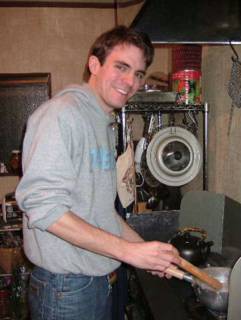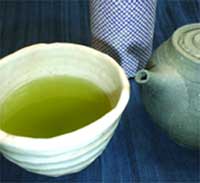It's been about a week since the New Years vacation ended, and Tokyo is groggily starting to kick itself back in gear, everyone walking around with the glow of the holidays and the grim knowledge that from here on out there's nothing to look forward to but spring and those iconic cherry blossoms.
Today was Seijin no hi, "Coming of Age Day", where everyone who turned 20 this year gussies themselves up in splashy kimonos and scarves and heads down to the local shrine. They are now officially adults, finally allowed to vote, smoke, swear, fornicate and abuse alcohol. Preferably all at the same time.
In a way it was my own personal "Coming of Age Day", albiet 5 years too late: I translated my resume into Japanese, signalling yet another step into the clutches of the Japanese social system. I did a rough translation myself, then asked my friend Nori to look it over with me. First question out of his mouth:
"Where's your birthday written?"
Ageism? Check.
"Do you have a passport size photo?"
Racism, hairism, not-good-looking-enoughism, check.
Me: "Well, why don't we just take it with your digital camera and print it out onto the resume?"
Nori: "Are you kidding? Color, high quality, those things are important. You need official passport size photos. And you should probably include a section on personal interests at the end here."
Me: ". . ."
Nori: "Oh, and you have to write resume (rirekisho) in big letters at the top there. Bigger. Ok."
Getting down to it, I suppose I shouldn't be surprised that resumes written in Japan would be so different from those in the US. I spent a good chunk of today finding resume writing advice online in English, and they contradicted Nori's Japanese resume model point for point: don't write resume at the top, nobody wants to hear "good with people", nobody cares about your stamp collection.
First off, what's up with divulging your birthdate, talking about your hobbies and attaching a photograph? Rhetorically, if not always in practice, the US ties itself in knots to avoid claims of racism, sexism and other forms of discriminatory hiring practices. As such, resumes, as projections of ourselves, become purely business related, pumping up the way you kicked ass at your library stacking job, increasing shelving rates by 60%. (Interestingly enough they also emphasized how you should leave out any "controversial" political connections. )Theoretically race, age, creed, gender, sexual orientation and favorite color should be irrelevant. I mean, hey, 60% increased shelving rate. We'll hire a Samoan grandmother who's queer as a 3 dollar bill and digs magenta if she can shelve books like that.
The state of employment in Japan is a bit different though. I think it is especially revealing to note that there are two words for "part time work" in Japanese.
Arubaito or
baito comes from the German
arbiet and refers to any part time or non career oriented job for young people.
Paato, coming from the English "part" is used to describe work for older women, usually married, who take on a job in addition to their husbands. More than discrimination, jobs are actually intended for specific genders and age groups. A common help wanted advertisement will list the ages suggested for the job, and many jobs for young women cut off at 30, the assumption being that a) who wants an elevator girl over 30? and b) you should be married and taken care of by then.
Last year there was a bestselling book that coined a new phrase,
makeinu, "loser dogs", for single working women over 30. The author, a single working woman over 30, basically vetted the host of challenges unmarried women face, from the social stigma to the economic burden arising from both low paying jobs and a tax system hostile to single working people. The book (as I understand it) sought to dispel notions that women that old should be worried about marraige at all, and should embrace their independence and wear the
makeinu label proudly and defiantly.
The stark reality of Japanese society is that not only do men receive better pay for the same work as women, but despite laws to the contrary, jobs are overwhelmingly defined by age and gender. But with the gradual decline of the Japanese economy in the last few years more and more married women are entering the workforce in service and factory jobs as
paato to help make ends meet. Dad may still be the main breadwinner, but since she's been doing a few shifts a week down at the meat packing plant it's Mom who brings home the bacon.
Without saying this sense of "proper roles" extends to foreigners. While making a decent salary, Brazilians and Peruvians are generally confined to factory and occasional construction work, West Africans promoting bars and clubs, Thai and Phillipino women in the sex industry, Americans and Brits to English teaching jobs and modelling work, and Mongols to sumo wrestling. (For those of you who don't follow sumo, the current grand champion is Mongolian, as are many top ranked up-and-comers.) I am making up my resume both to score English teaching jobs to pay the bills, and restaurant jobs to keep my soul. But even finding restaurant work is tricky. Tokyo is a goldmine of foreigner friendly places, but they are the exception to the rule, most places simply would not hire me, not matter how good my Japanese was: a white face simply wouldn't fit the image.
In many ways I think the US operates on this level as well, with such intangibles as background and values mixing with race, age, gender and most importantly class in hiring practices. Instead we have developed a whole language of euphemisms to talk around these issues, whereas comfortably mono-cultural Japan has no qualms turning you down for any of the above reasons. Someone once referred an English teaching job tutoring a group of professors at a medical school who wanted to bone up on their conversational English for medical conferences, and was turned down flat "because we want a female teacher." Compared to us white folks Asian-Americans generally have a tough time getting English teaching jobs because they don't fit the blue eyed blond haired image.





